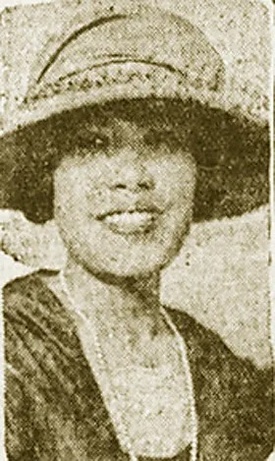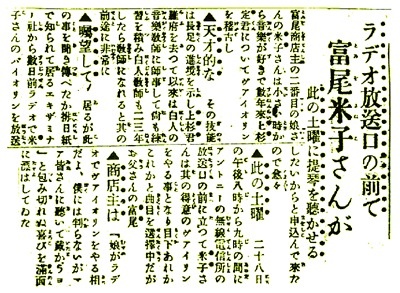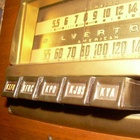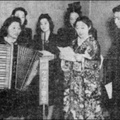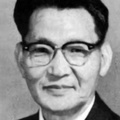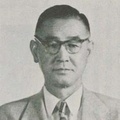Commercial radio broadcasting in America began with the launch of KDKA in Pittsburgh in 1920. In Los Angeles, the first station was KQL, which was licensed in October 1921. By June of the following year, there were 25 stations. At the time, the frequency allocated for broadcasting was limited to one, 833 kHz, so each station broadcast for a short period of time, adjusting the day of the week and time.
Regular Japanese radio programs began in Los Angeles in 1930, but Japanese people could be seen appearing on the radio even before then. Let's start by looking at music, which is said to be the world's common language. From what I have researched, the mezzo-soprano singer Umezaki Sugako is considered a pioneer in this field. Umezaki was born in Nagasaki Prefecture and traveled to the United States in the early 1910s to study music. After graduating from the Cincinnati Conservatory of Music, she moved to Los Angeles around 1917, where she performed at churches, taught vocal music, and worked for the Rafu Shimpo newspaper.
On July 11, 1922, Umezaki appeared on the music program of KHJ, which is run by the Los Angeles Times. He sang "Butterfly" and "Izumo no Komoriuta" in Japanese, and "Twilight" and "The Valley of Laughter" in English. The Japanese songs were included in a collection of songs published by composer Gertrude Roth as "Yamato Shirabe" (The Art Songs of Japan), and Roth herself accompanied him on the broadcast.
Also, Fujiwara Yoshie, who was popular in Japan as "Our Tenor", appeared on KHJ on January 4, 1924. Later, when Fujiwara sang "Shikararete" and "Sakura" on KNX, the Kakuda Musical Instrument Store in Little Tokyo set up a "storefront radio" for advertising purposes, and a large audience gathered, creating a huge crowd.
From 1925 onwards, Japanese language newspapers started to carry articles about Japanese people appearing on radio. Although the words "radio" (rajio, radeo) and "broadcasting station" were used in the papers at this time, their usage had not yet been established, and when Yoneko, the second daughter of the owner of Tomio Department Store, appeared on radio, an amusing expression was given: "Yoneko stood at the broadcasting port of Anthony's Wireless Telegraph Office and played her specialty, the violin" (Rafu Shimpo, February 20, 1925). By the way, this was a time when the name of the operator of a broadcasting station was more easily understood than its call sign, and "Anthony's Wireless Telegraph Office" referred to KFI in Los Angeles, which was run by Earl C. Anthony.
Other musicians who appeared on radio in the 1920s included Tatsumi Seijiro (tenor), Miyauchi Shiro (baritone), Ishigami Takane (soprano), Inoue Kyoko (soprano), Sugimachi Miyoshi (soprano), Satsuma Tsuyoshi (tenor), Naito Chikae (harp), and Watanuki Homare (harmonica), who delivered their melodies to the skies of Los Angeles.
A rare example is the broadcast of Noh songs by Izumi Taiichiro, a Kanze school Noh performer. Izumi traveled to the United States in July 1927 at the invitation of the Southern California Noh Society in Los Angeles, and spent a year teaching Noh songs and dance to Japanese residents in the United States. During that time, he appeared on the radio twice. When he sang "Yang Guifei" on KFWB (Warner Brothers Radio Station) in August 1927, he was compared to the Italian opera singer Caruso and received great acclaim. Another great achievement was the broadcast of "Kosuido" and "Horaisan" by Takakura Asahiko, a Chikuzen biwa player who had been performing all over the West Coast since March 1929, with the arrangement of Nichibei Kogyo and Teikoku Boeki Shokai, on KFWB in June of the same year.
On the other hand, the first time a message in Japanese was broadcast was in the field of religion. It was a lecture given at KHJ by Honpa Honganji Temple head priest Otani Sonyu on November 12, 1925. The message was also translated into English so that many people could hear the essence of Buddhism. In June 1929, Reverend Imai Kawa appeared on KTBI (Bible Hall Broadcasting Station) three times. Reverend Imai was originally a Shingon Buddhist priest, but he had come into contact with the teachings of Jesus Christ while recuperating from an illness and converted to Christianity. He preached a sermon based on his book, "The Motive for My Conversion."
*This article is an excerpt from Japan Hour (2020) and reprinted from The Rafu Shimpo (April 15, 2021).
© 2022 Tetsuya Hirahara


